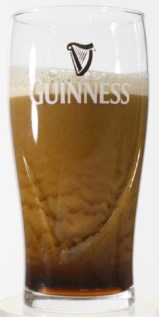
Pouring a proper pint of Guinness beer takes practice. It should be done in two stages to allow the bubbles to create the perfect head. Indeed, it is the behaviour of the bubbles that give Guinness and similar stouts their lovely creamy texture.
This way of texturing beer was developed at the Irish brewer over the past 60 years, and now, physicists in Japan have worked out the physics of how it is done. Instead of simply moving upwards like the bubbles in most poured glasses of beer, Guinness bubbles tend to continue moving downwards and flow collectively in a “bubble cascade”.
Led by Tomoaki Watamura at Osaka University, the team created a computer model that was able to reproduce the bubble cascade observed over a range of glass sizes and other conditions. The observations were made in the lab using a transparent “pseudo-Guinness fluid” as well as the real thing.
The good news for brewers is that the team concludes that bubble cascades should be possible in beers other than stouts – or even in other beverages. The team reports its findings in the paper “Bubble cascade may form not only in stout beers”.
Old model
The Ising model was first developed 100 years ago to describe magnetic phase transitions. Atoms in a solid can have one of two spin states (up or down) and interact with their neighbours. This interaction can be ferromagnetic – encouraging neighbouring spins to point in the same direction – or antiferromagnetic, encouraging the spins to point in opposite directions. Despite the simplicity of the Ising model, it displays a richness of behaviours and has proven very difficult to solve at dimensions higher than one.
Over the years, researchers have used the Ising model to describe other systems – and now researchers at São Paulo State University in Brazil have used it to explain the importance of quarantine and social distancing in the battle against COVID-19. Mariano de Souza and colleagues modelled infected people as being spin-up and the rest of the population as spin-down. The team added other concepts from physics to their model, including the Bethe lattice and percolation theory. While this is not the first time that these concepts have been applied to epidemiology, the team say that their formulation clearly illustrates why people should keep their distance during a pandemic.
You can read more about their research in the paper “Epidemics, the Ising-model and percolation theory: A comprehensive review focused on COVID-19”.
Canada’s Perimeter Institute for Theoretical Physics is asking “Are you an Einstein about Einstein,” to encourage people to take their quiz about the great physicist. They say the quiz celebrates 2021 as the hundredth anniversary of Einstein receiving his Nobel Prize – but we don’t need an excuse for a quiz here at Physics World.
The questions will test your knowledge about Einstein’s work, his early life, and his last words.



